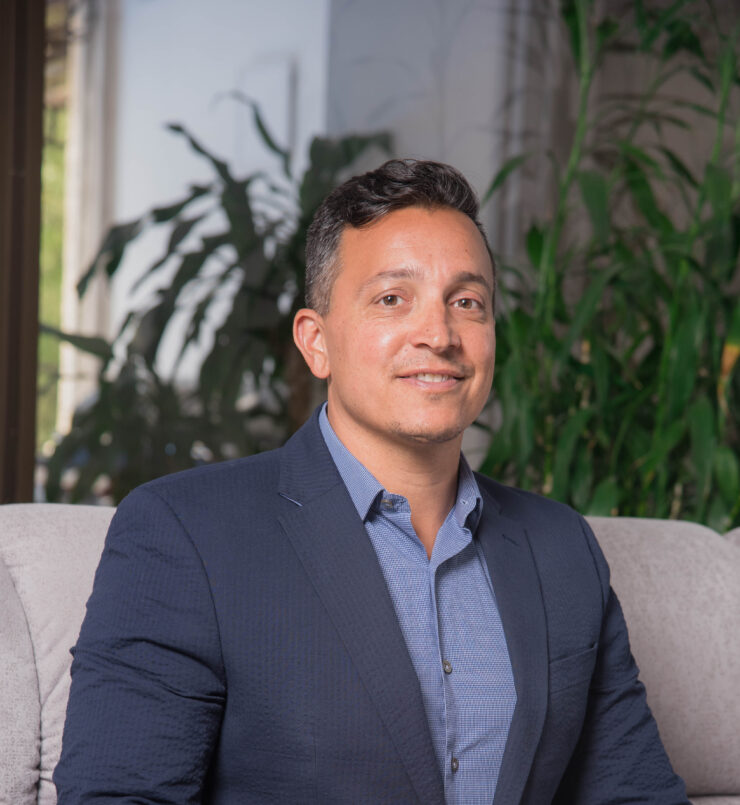Dr. Gerry Petratos, after his NIH Fellowship in Medical Informatics in 2001, first followed a path to Pharmaceutical Medicine until he realized that there was a major unsolved problem in healthcare: Getting good data into and out of the digital workflows for doctors, which required clinically-tailored Ai. Gerry is CEO of HITEKS since 2011, a leading clinical automation company integrated with Epic. He sat down with interviewers for a conversation about the company’s growth, its status today, and his exciting vision for the future of healthcare.
HITEKS is growing, how many employees do you have now?
HITEKS has grown significantly during the pandemic. We doubled our revenues and added staff. While we don’t publish our specific numbers, we are a software company with mostly engineers, and are placing an increasing focus on the marketing aspects of measuring return on investment (ROI) for our clients.
How did the Pandemic affect HITEKS?
Since manually driven processes were affected by the office closures and lack of short-term revenues to support salaries, the demand for HITEKS grew due to its ability to automate clinical administrative processes. Much like the hospital systems that we serve, the demand surge has caused us to optimize our infrastructure to process more medical records and provide even more query advice. We were previously focused on only reimbursement-related CAPD queries, but now we have added quality, clinical validation and risk adjustment. We haven’t been able to hire quickly enough to meet the challenge, but we are still working on finding more talent. Fortunately we have a collaboration with Epic which allows us to market directly on their App Orchard marketplace (apporchard.epic.com).
How many doctors do you serve?
We have over 15,000 doctors who use our software, typically as part of enterprise practices. Our customers are health systems (including over 100 hospitals), and our users are doctors and nurses who document their care in the Epic medical record. The value we are creating saves time, increases top-line revenues, reduces claims denials and boosts specialty quality rankings (e.g. US News and World Report). For example, Tufts Medicine wanted to ensure that their documentation improvement specialist staff were able to cover all the patients in their newly merged multi-hospital (academic and community) system, and also address ambulatory needs. They called on HITEKS due to our ability to integrate with their existing EHR workflows and deliver timely queries to physicians. 100% of the charts are now being addressed for quality, risk adjustment and revenue queries.
Another customer who is seeing real results is Vidant Health. After implementing our CAPD360 (Computer Assisted Physician Documentation) solution powering Epic’s NoteReader CDI workflows, they closed a 40% gap of unaddressed queries with the same headcount. They also measured a 3% increase in revenue for the charts that had at least one query from HITEKS. Most importantly, their physicians were happy because they spent less time conducting chart reviews and answering administrative questions about their patient care.
Do customers realize the value they thought they would get from automation?
HITEKS has been working with Epic clients since 2013 to help them with clinical automation. The value each customer receives is measured on a quarterly basis so that we ensure that what they are expecting is being achieved. We learned from early lessons of previous applications (Problem List Management and Search tools) that if we don’t provide this quarterly feedback, the faith in the software is diminished. So in our latest version of our platform and our flagship product CAPD360, we’ve incorporated reporting as part of a dashboard that can demonstrate the value. Typically this is by showing how many physicians are responding to our system’s advice, and the impact of that advice on each encounter’s revenues, and the hospital’s denial rate and quality metrics (as measured in US News and World Report and CMS Star Ratings).
How has your customer retention been?
We’ve been extremely fortunate to have one of the highest customer retention rates in our industry sector, at above 95%. We are also interested in expanding usage of our system amongst Pediatric Hospitals, Emergency Department settings, Long-term care facilities, SNIFs and other areas typically left unaddressed by the market.
What does a typical customer look like?
HITEKS has long-term relationships, typically investing $Millions annually into our R&D development efforts to satisfy customers with new features for better clinical data integrity. That’s how we developed our outpatient pre-charter tool, integrated with Epic’s Pre-charting ambulatory workflow. No other vendors were able to come up with a workable solution so we put our minds together and worked with a customer to develop the initial version. The result is a considerable increase in their Risk Adjustment Factor scores because we double the total relevant HCC chronic diagnoses by combing through the last 2 years’ worth of patient charts. In 2022 we are starting a new program for smaller community and State-run hospitals who use Epic, which will help them tremendously with the latest technology that will compensate for their lack of CDI Specialist staff.
How do you calculate the return on investment (ROI) for your customers?
We measure our value in 4 ways with clients, each of them providing their own ROI, depending on the needs of the organization:
1. Direct revenue enhancement: this is through causing a shift in the DRG early-on through concurrent queries.
2. Cost reduction: since many of our clients have large numbers of clinicians conducting CDI queries, they can now freeze or even reduce headcount due to the timely and accurate software suggestions that we provide.
3. Denials reduction: Denials justification reviews are reduced for 2 reasons, first since the clinical validation for many queries is built into the automated query advice and second since there is less changed documentation owing to the fact that HITEKS queries come before physicians sign their notes.
4. Quality rankings improvement and maintenance: Most providers want to be recognized for the good care they provide to complex patients, so HITEKS includes quality queries (Cancer Metastasis, Neuropathies, Severe Liver Disease and others) that address the Outcomes portion of the index measures, as defined by the Elixhauser model.





